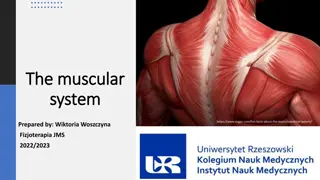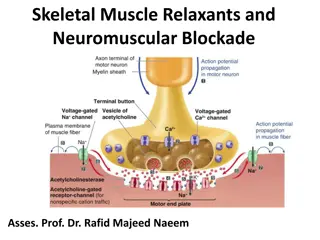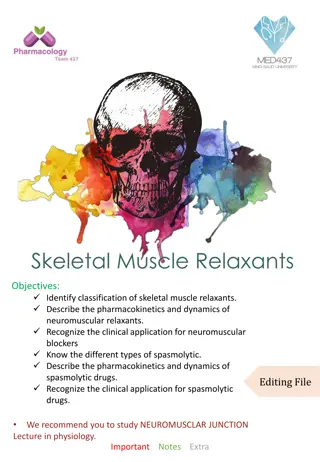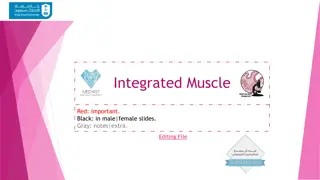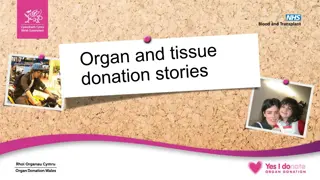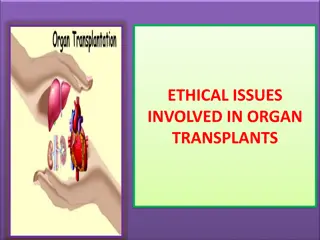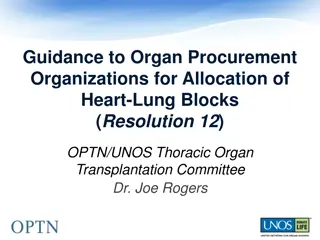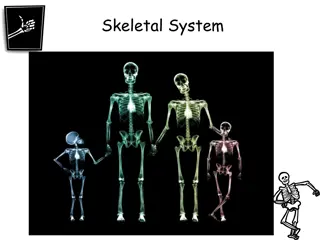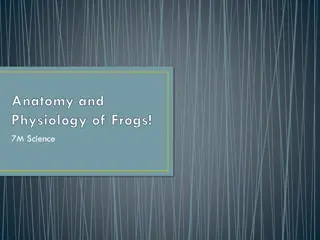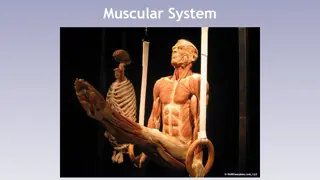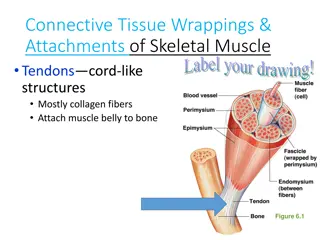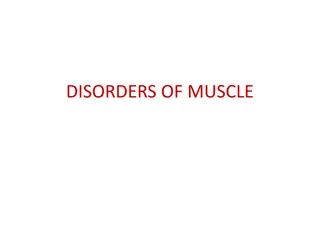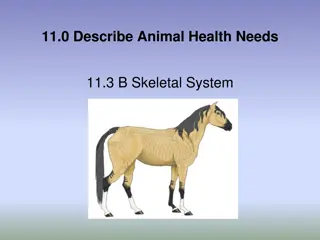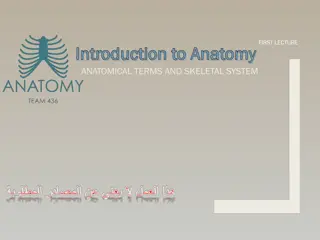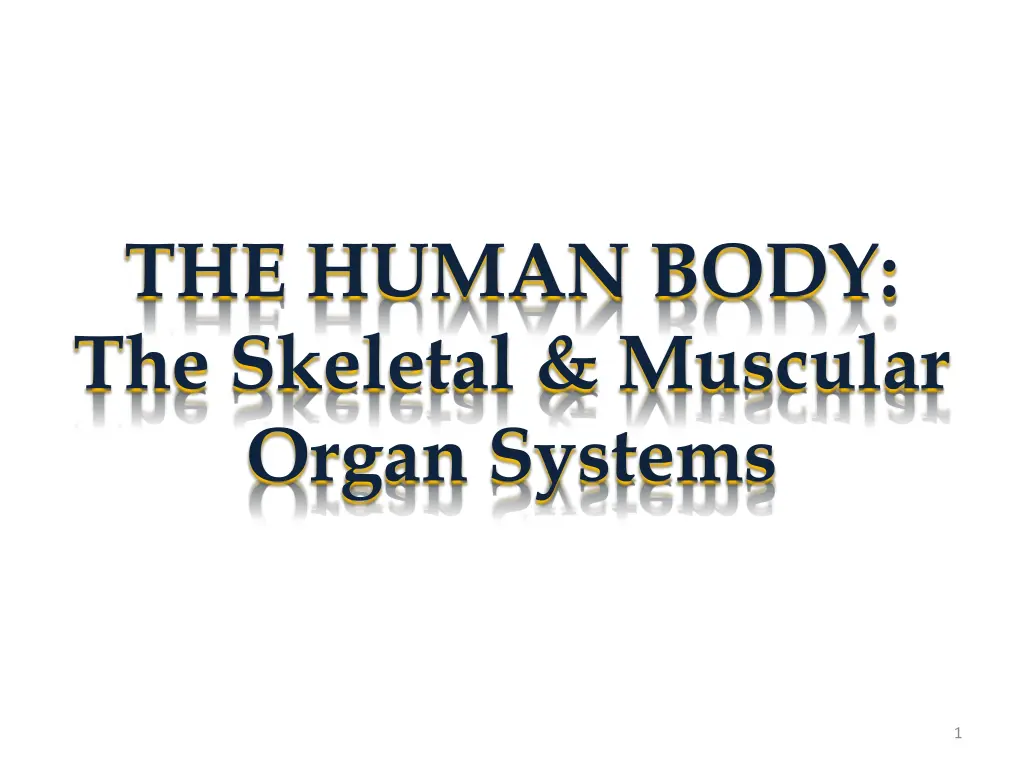
Fascinating Insights into the Skeletal System & Muscular Organ Systems
Explore the wonders of the human skeletal system, including its functions, bone structure, bone mineral composition, bone count, and more. Discover interesting facts about bones like the femur and the tiny bones in the middle ear. Uncover the importance of ribs, the skull, marrow, and cartilage in the body's functioning. Delve into the connective tissue that supports the body and learn about essential bones that safeguard vital organs.
Download Presentation

Please find below an Image/Link to download the presentation.
The content on the website is provided AS IS for your information and personal use only. It may not be sold, licensed, or shared on other websites without obtaining consent from the author. If you encounter any issues during the download, it is possible that the publisher has removed the file from their server.
You are allowed to download the files provided on this website for personal or commercial use, subject to the condition that they are used lawfully. All files are the property of their respective owners.
The content on the website is provided AS IS for your information and personal use only. It may not be sold, licensed, or shared on other websites without obtaining consent from the author.
E N D
Presentation Transcript
THE HUMAN BODY: The Skeletal & Muscular Organ Systems 1
The Skeletal System provides five major functions which are 1. SHAPE & SUPPORT 2. ENABLES YOU TO MOVE 3. PROTECTS YOUR INTERNAL ORGANS 4. PRODUCES BLOOD CELLS & 5. STORES CERTAIN MATERIALS UNTIL YOUR BODY NEEDS THEM. 2
The 26 bones that make up the center of your back is called your what? VERTEBRATE (BACKBONE) 3
The word skeleton actually comes from a Greek word meaning a dried body. Bones are made up of two main minerals; which are what? 4
How Many Bones Does the Human Body Have? Approximately 206 bones, however a new born has 275, as the human body grows the bones fuse together. 5
Of all 206 bones in the human body which one is the biggest? FEMUR 6
Behind the eardrum is an area called the middle-ear it contains the three smallest bones in the human body the __________, the __________ & the __________. STIRRUP ANVIL HAMMER ANVIL HAMMER STIRRUP 7
What bones protect the lungs & inner organs? RIBS What bone protects your brain? YOUR SKULL 8
The spaces in bones that contain a soft connective tissue called what? MARROW There are two types of marrow: Red & Yellow. Red Marrow produces Red Blood Cells & Yellow Marrow stores fat, which serves as an energy reserve. 9
A connective tissue that is softer than bone, but flexible & strong is called what? To feel it touch your nose & ears. CARTILAGE 10
A place in the body where two bones come together & enable movement is a what? JOINT Movable joints allow the body to make a wide range of movements, there are four types of joints: ball-and-socket, pivot, hinge, & gliding. 11
Bones are organs that contain two types of tissue. _________________ is the hard outer layer of the bone. _______________ is the interior region of bone that contains many tiny holes. COMPACT BONE SPONGY BONE 12
As people become older, their bones begin to lose some of the minerals they contain. Mineral lose can lead to _______________, a condition in which the body s bones become weak & break easily. OSTEOPOROSIS 13
There are a total about how many Muscles in the Human Body? 200? 300? THAT S NOT RIGHT EITHER. HOW DOES 400 SOUND? STILL A LITTLE SHORT. THERE IS ABOUT 600 MUSCLES IN THE BODY!! NOPE! 14
The bones in movable joints are held together by strong connective tissues called what? LIGAMENTS 15
Muscles that are not under your conscious control are _______________ muscles & muscles that are under your control are called ___________ muscles. VOLUNTARY INVOLUNTARY Your body has three types of muscle tissue & they are what? 1. SKELETAL MUSCLE, 2. SMOOTH MUSCLE, & 3. CARDIAC MUSCLE 16
What is a strong connective tissue that attaches muscle to bone? TENDON 17
What type of voluntary muscles are attached to the bones of your skeleton? These muscles provide the force that moves your bones. SKELETAL MUSCLES 18
What type of involuntary muscles are inside many of the internal organs of the body, such as walls of the stomach & blood vessels? SMOOTH MUSCLES 19
What type of involuntary muscle, is similar to smooth muscles but never gets tired & continuously has contractions? CARDIAC MUSCLES 20
Muscles can only ____________ when they receive messages from the nervous system, not extend. While one muscle contracts, the other muscle in the pair returns to its original length or relaxes. CONTRACT 21


